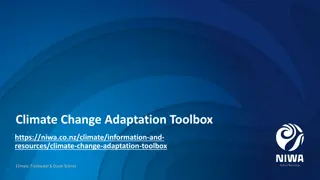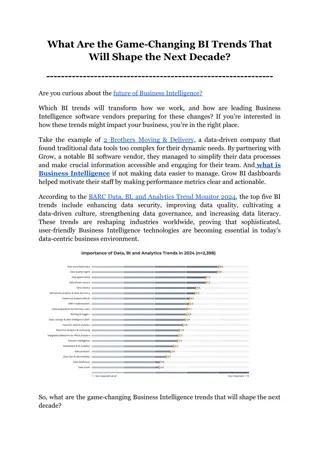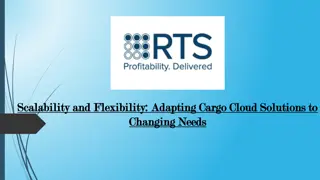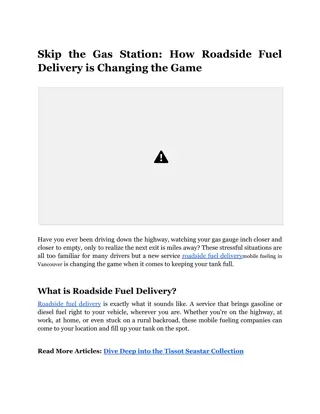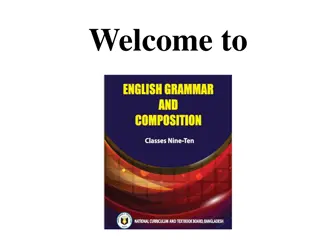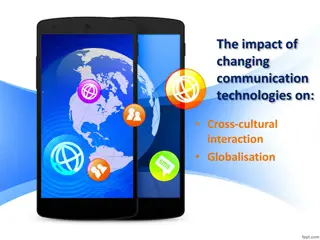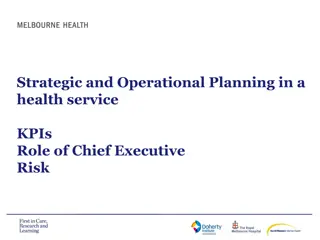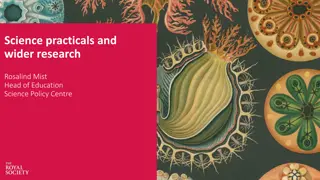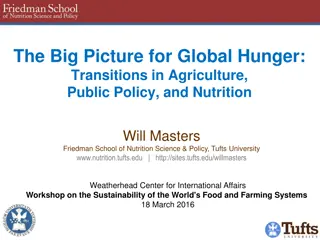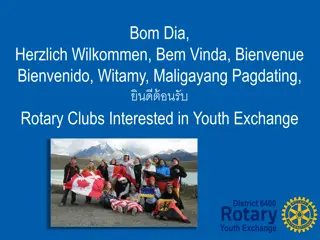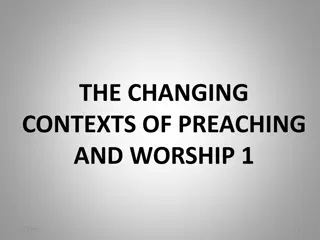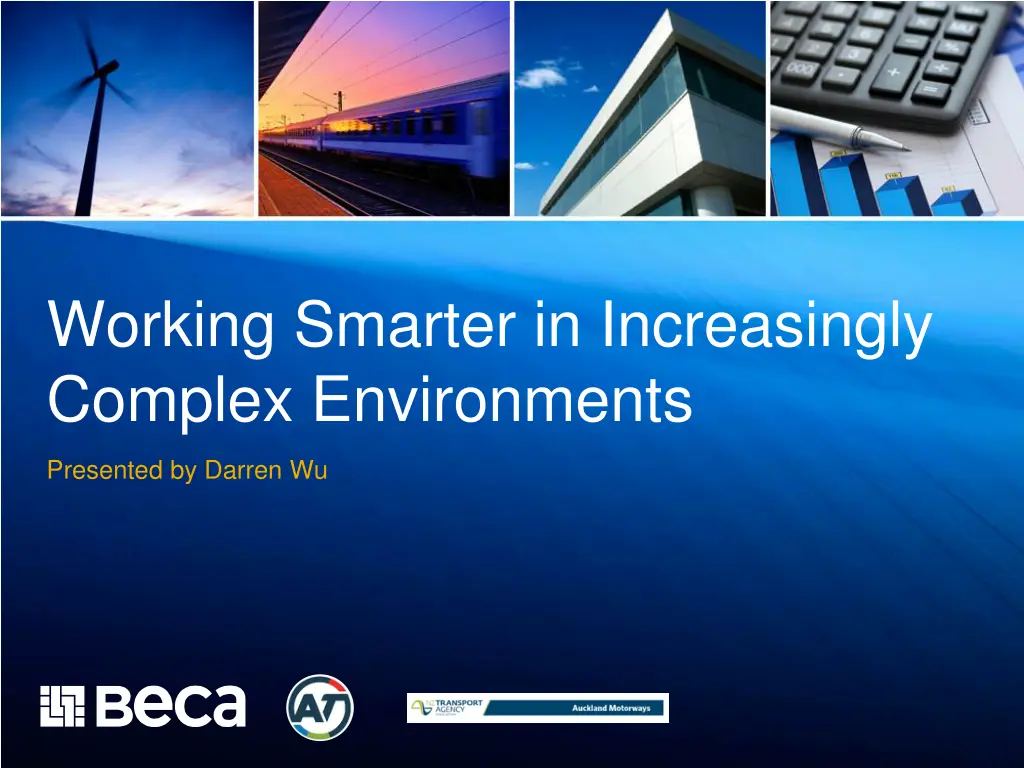
Smarter Way Challenge in Complex Environments
Discover how to work smarter in increasingly complex environments presented by Darren Wu. The data provided sheds light on population trends and vehicle volumes from 2001-2014. Industry insights emphasize safety, efficiency, and effective transport corridor utilization. Future considerations highlight rising standards in construction and transportation management. Engage with the smarter way challenge objectives focusing on traffic management, construction methodology, stakeholder communication, contingencies, and monitoring plans. Explore the components required for effective detour management and key messaging strategies for optimal compliance. Enhance your understanding of network operations, contingency planning, and traffic monitoring in complex scenarios.
Uploaded on | 1 Views
Download Presentation

Please find below an Image/Link to download the presentation.
The content on the website is provided AS IS for your information and personal use only. It may not be sold, licensed, or shared on other websites without obtaining consent from the author. If you encounter any issues during the download, it is possible that the publisher has removed the file from their server.
You are allowed to download the files provided on this website for personal or commercial use, subject to the condition that they are used lawfully. All files are the property of their respective owners.
The content on the website is provided AS IS for your information and personal use only. It may not be sold, licensed, or shared on other websites without obtaining consent from the author.
E N D
Presentation Transcript
Working Smarter in Increasingly Complex Environments Presented by Darren Wu
The data tells us + 22% + 6% + 12% + 12% + 7% + 12% + 14% + 12% + 6% + 12% + 4% + 15% POPULATION (2001 2013) VEHICLE VOLUMES (2010 2014)
Our industry tells us http://nzta.govt.nz/site-resources/content/about/img/safer-journeys-logo-img5.gif Safety of the travelling public Safety of the workers Efficient utilization of the transport corridor for the work and the travelling public
The bar has been raised Construction Construction Requirements Requirements Consistency Safety of road users and workers Community engagement Effective use of the network TMP Design TMP Design ( (CoPTTM CoPTTM) ) TMP TMP Implementation Implementation
The Smarter Way Challenge TM OBJECTIVES 1. Traffic Management Construction Construction Requirements Requirements Consistency 2. Construction Methodology e.g. TIA, TM Strategy, TMP Proforma Safety of workers 3. Communication / Stakeholders 4. Contingencies Safety of road users TMP Design TMP Design ( (CoPTTM CoPTTM) ) Customer focus 5. Monitoring Plan Effective use of network Innovation Education and TMP TMP Implementation Implementation Information
The Smarter Way Detour 3. Communication / Stakeholders: The components required to develop key messages and how they can be most effectively delivered to the target groups to achieve highest compliance with requested behaviours TIAs / TM Strategies / TMP Proformas Who are the people affected and how are they affected? What messages need to be communicated to who? How can the messaging be communicated effectively? 1. Traffic Management : The components which make up the understanding of the network operations such that the traffic management implemented will ensure acceptable conditions are provided to road users. 4. Contingencies: A series of backup plans to manage the network conditions should operations become unstable. What road space do we need and what can we take? What are the likely impacts? Does this adjust our plans? Can I use the wider network to manage impacts? Are there innovative ways to manage traffic conditions? What are the risks areas for the operations? What back up plans are required to address them? Who calls the shots? 5. Monitoring Plan: A plan for monitoring operations during peak times to assess for improvements or activation of contingency plans. 2. Construction Methodology: The construction activity that will ensure that the work has the highest chance of being completed on time or earlier. Where are the key areas to watch? When do they need to be monitored? Who is responsible for what? Where does the information go? Do they really need what they have asked for? Re-working the methodology if there are limitations to TM. Can additional work be carried out in the same closure? If we could take more space and time, could more be achieved that would save on future closures?
When TM is done well Safety & Wellbeing Safer work areas for site crew Safer journeys for motorists and active mode travellers Programme Efficiencies Maximise construction activity in work area Challenge status quo arrangements Traffic management activity Benefits Cost Construction activity Road user costs (travel time, petrol) Risk Management Network impacts Positive Stakeholder Management Acknowledgement of affected community Timely communication Reputation of project and involved parties Supportive stakeholders
Discussion Panel Andrea Williamson Network and Systems Manager (MHXK) Fletchers Duncan Edgar Network Traffic Management Coordinator Auckland Motorway Alliance Laurence Jones Team Leader Works Approval (Cntrl & Sth) Auckland Transport

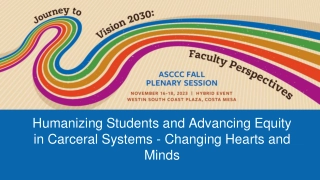
![Download Book [PDF] Changing the Game (Offsides Book 1)](/thumb/42244/download-book-pdf-changing-the-game-offsides-book-1.jpg)
